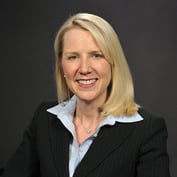When you think of a fund manager, you probably think of an individual proud of doing his own research, patiently picking individual equities or bonds, delivering a unique portfolio that gives superior performance.
Instead, imagine something quite different. Consider a manager who has billions of dollars in assets under management, but rather than buying individual equities, he’s buying other mutual funds. And of those mutual funds, all of them are managed by the very firm he works for. Imagine a fund of funds whose quantitative investment process is so refined it is only rebalanced three or four times a year.
Meet Ben Inker, chief investment officer of quantitative developed equities and director of asset allocation at Boston-based GMO Trust Funds, a division of Grantham, Mayo, Van Otterloo & Co. LLC. Managing the GMO Trust Global Balanced Asset Allocation Fund/III (GMWAX) along with several other funds, Inker relies mostly on the underlying investments and research of the GMO funds he invests in to maintain his above-average returns. “I know what is going on in the underlying mutual funds because we manage them,” he says. “And because I know that my underlying implementation alpha is going to buy me some time for things to work out on the asset-class level, it gives me the flexibility to be somewhat more aggressive in moving money from asset class to asset class to find the places that are priced to give good returns.”
For the five-year period ended August 29, 2003, GMWAX had an average annualized total return of 10.7%, versus a total return of 1.4% for the FTSE World Index (excluding U.S.), and a 5.7% return for all international balanced funds, according to Standard & Poor’s. The fund also earned five stars from Morningstar and S&P and is ranked fifth within the entire universe of 34 funds in the international balanced funds peer group.
And though this is an institutional fund with a minimum initial investment of $5 million, there is a retail fund, Evergreen Asset Allocation Fund (EAAFX), that GMO subadvises for individual investors. “That fund is a clone of [GMWAX],” he says. “They are managed exactly the same way.” The Evergreen Asset Allocation Fund also carries the five-star mark from S&P, has a $10,000 minimum initial investment, and reports an annualized total return of 9.2% for the five-year period ended August 29, 2003. There is, however, a 5.75% front-end sales load on the fund.
We recently spoke to Inker about his fund and the GMO approach to quantitative investing.
Tell me about this fund-of-funds investment approach and why this fund only invests in other GMO funds. What are you trying to accomplish? Are you more comfortable with the style purity of the GMO funds? We use only GMO mutual funds for a couple of reasons. First, we know what we’re getting in the GMO mutual funds. If we’re investing in a GMO small-cap value fund, we know that we’re going to get small-cap value exposure. We don’t have to worry about whether the fund has leapt into technology stocks because the manager has a hunch that they are going to be hot this quarter. Since we are choosing to invest in small value because we think that small-value stocks are attractive, it is essential that the investments we buy be true to that style.
Second, we have a lot of confidence that GMO mutual funds will outperform over time. Our strategies have outperformed their benchmarks by 3% per year on average over the 25 years we have been in business. Much of the value added in this fund comes from the fact that our U.S. large-cap equities should outperform the S&P 500 over time, our emerging market equities should outperform the MSCI Emerging Index, and so on.
Tell us about your management style. What is your role in managing this particular fund? Each of the funds within the firm is run by a team of portfolio managers. The funds are quantitatively managed, so the teams and researchers are [constantly] working on improving our tools for picking stocks in various sectors around the world. My job–as director of asset allocation and portfolio manager for this fund–is to determine what the weights should be across different funds. All of the funds that we are managing here exist as stand-alone products.
This particular fund started as our way of helping [institutional] clients who wanted advice on allocation across asset classes. It was a way for us to do that for them rather than having them keep going back to their investment committees and saying things like “Okay, now we want to move 2% out of U.S. stocks and into international stocks.” The underlying pieces are funds that we have been managing for up to 20 years where the bulk of our outperformance should come in the long term. But in addition to that, we want to look around the world to see which asset classes are priced to deliver good risk-adjusted returns. For instance, while I’m quite confident today that our U.S. core fund should do a very good job relative to U.S. large-cap stocks, we don’t think that U.S. large-cap stocks are priced to give a decent return. We want to have as little of that as we can, given that this is a fund that should look like other global balanced funds. So while we can’t have zero in U.S. large caps, we want to err on the side of having less, and put more of the money into asset classes that are priced to give a decent return.
What is your process for determining the weights of each holding? We start off attempting to come up with a fair value for each of the asset classes that we invest in. That is derived from our views of what an equilibrium return would be to that asset class, and then what pricing would be consistent with earning that return in the long term. We come up with a fair value, and then we use that to generate an expected return for the asset class, using the assumption that the asset class will lend its way toward fair value and achieve it within seven years.
The good news is that asset classes are predictable in the long term. It is possible to come up with an estimate of fair value and asset classes will revert to it–they always have. The problem is that it is difficult to figure out the timing of that [reversion]. So in coming up with our asset class forecast, we look to see where the big deviations from fair value are, and assume that they are going to take a while to come back to fair value. We use that to generate a forecast, which we then use to put together a portfolio that is biased toward the asset classes that are cheap and against those that are expensive.
We manage with one eye toward delivering absolute returns in the long term, and another eye toward the relative risk of being too different from what people would expect a balanced portfolio to do. That is an important issue. One of the real problems in managing money is [within the management style itself. In other words,] the appropriate way of managing money for a client is not necessarily the exact same way you would manage it for yourself. That’s partly because you know yourself very well and, among other things, you know you are not going to lose faith in yourself. But you don’t know as much about [someone else] who is managing your funds.








 October 01, 2003 at 04:00 AM
October 01, 2003 at 04:00 AM










